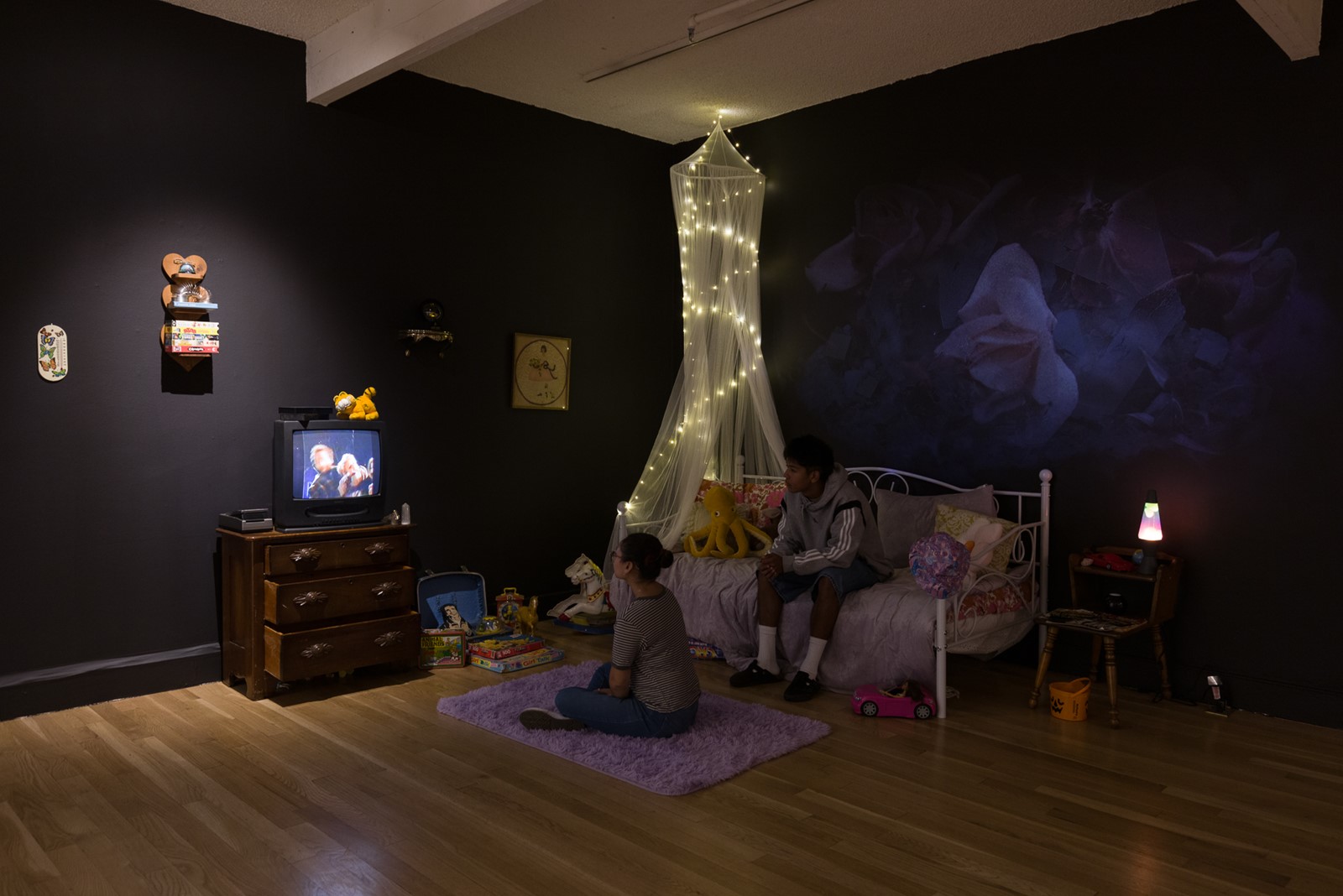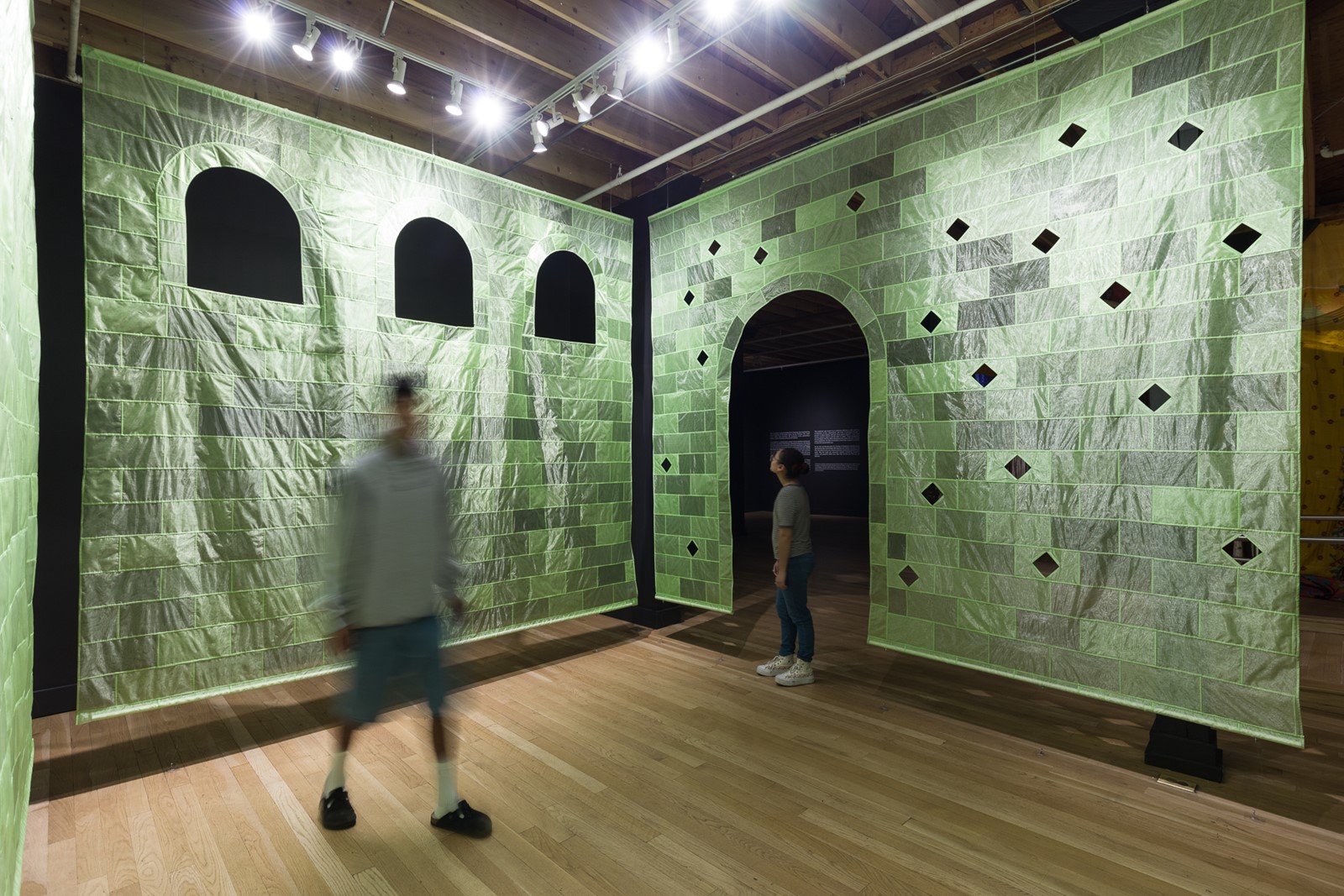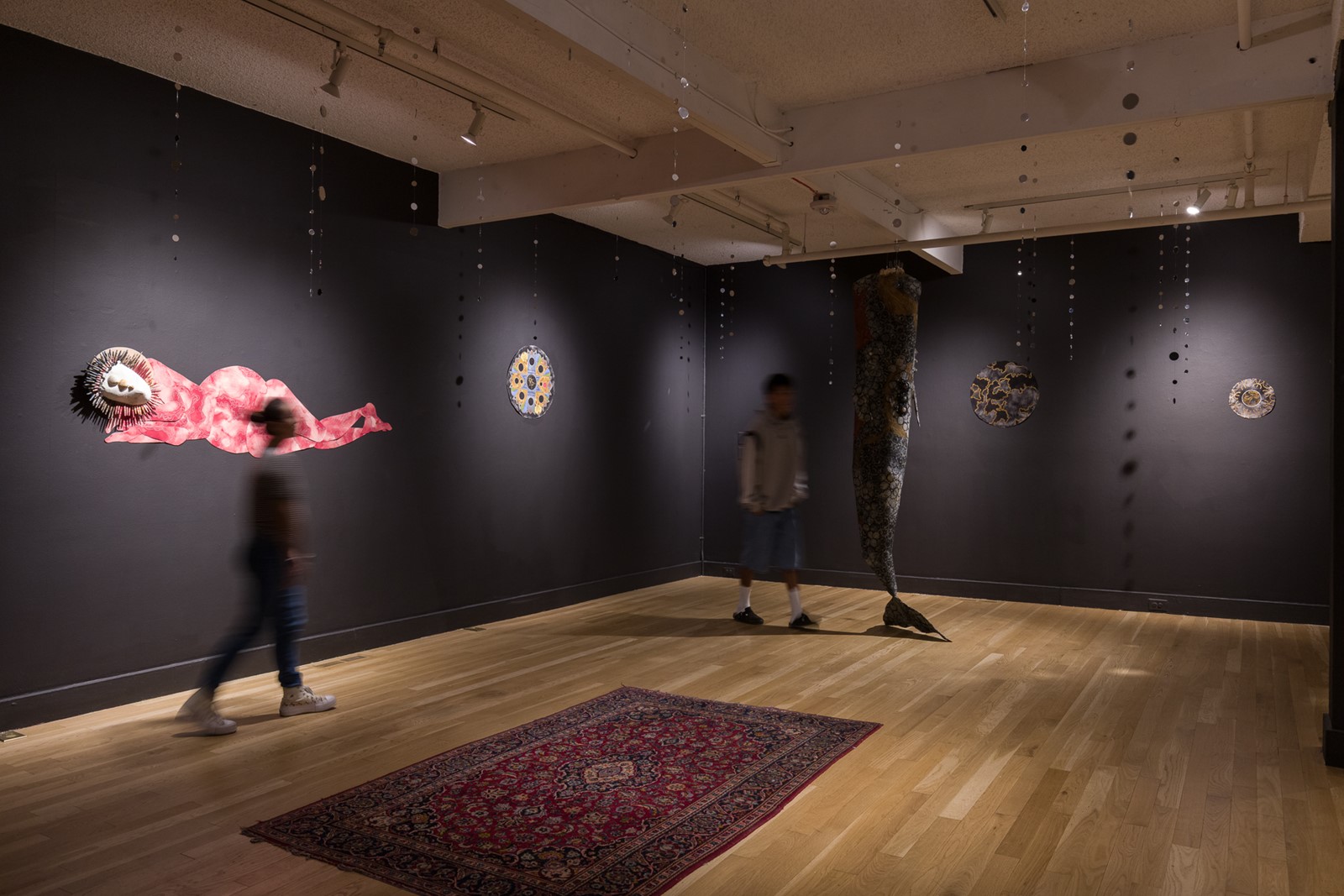


We’ve officially reached mid-July. In Boulder County, it’s that time of year where it’s possible burn your butt on a park bench, the AC is overworked and the novelty of summer is starting to wear thin.
If you’re already sweating through your clothes or bracing for the next Xcel bill, it might be time to head to an art gallery — not just for the free cold air, but for something a little more restorative. Two Boulder exhibitions offer just that: “Divine Rest Nests: An Invitation” downtown at BMoCA leans into softness and stillness, while “Woven Intersections” in North Boulder at NoBo Art Gallery invites you to move through ropes and reimagine the social fabric. Both ask what it means to rest, connect and pay attention to ourselves and to each other, which, under the blaring summertime sun, is easy to lose sight of.
At the Boulder Museum of Contemporary Art, 1750 13th St., Boulder, “Divine Rest Nests: An Invitation” asks visitors to slow down, lie back and listen to their breath, to their bodies and maybe even to their ancestors. On view through Sept. 1, the exhibition is an immersive art experience that invites guests to partake in the liberatory practice of rest as resistance. Guest curated by reproductive justice leader and creative Cristina Aguilar, the show features seven installations by artists Faatma BeOne’, Cal Duran, Lilian Lara, Soraya Latiff, Cindy Loya, Sàmmiotzi and Lares Feliciano — each one offering a different portal into restoration, reflection and release.
The word “rest” can be found everywhere these days, from melatonin bottles and lavender scented candles. Aguilar views the word as more than just a wellness buzzword — instead, the word has a political, ancestral and personal meaning to the El Paso, Texas-born curator. Raised along the U.S.-Mexico border, Aguilar described her journey from activist burnout to creative reawakening as one shaped by soft movement and the sacred spaces she never saw modeled in traditional leadership roles.
“I was too burnt out to keep doing justice work in the same way,” she said. “What I wanted, and what I needed, were soft landings. Spaces where I could be held, not just useful.”
That desire eventually evolved into a new creative path as a curator, one focused on healing and collective liberation.
Visitors to “Divine Rest Nests” will encounter seven environments, or “nests,” that range from contemplative and minimalist to playful and joy-filled.
“Each nest is a portal. A place where deep rest becomes an act of political and spiritual defiance,” Aguilar said.
Inspired by practices like yoga nidra (yogic sleep) and rooted in the wisdom of Black feminist and Indigenous traditions, these spaces invite visitors to pause, reflect and feel their way back to something sacred.
In “Slumber Party,” artist Feliciano channels the joy of late-night childhood mischief. VHS tapes line the shelves, comic books peek from drawers and toys invite gentle play. It’s an inner child’s bedroom reimagined as a site of healing: “A space where rest is also play,” Aguilar said, “where joy itself becomes restorative.”
Just across the gallery, Sàmmiotzi (an artist who, like Cher, is known only by their mononym) has a piece, “Escape to Cosmic Rest,” which offers a more celestial reprieve. Visitors can select a pillow adorned with symbols, like peace or plant medicine, then lie beneath a luminous being and listen to a lullaby built for star-traveling souls.
Lara’s “Liminal Courtyard” evokes a dreamlike blur between indoors and out. Gauzy green walls create an enclosure that is see-through and soft, holding viewers in a state of in-betweenness.
“You’re visible, but held. Vulnerable, but safe,” Aguilar said. “It’s a space that mirrors how so many of us move through the world.”
Upstairs, Loya’s “En las Nubes” invites quiet introspection and transformation through solitude, while Duran’s “Ancestor Cocoon” roots visitors in their lineage. Inside the cocoon, surrounded by elemental symbols and cosmic threads, guests are asked to turn inward and listen to their body, their memories and themselves.
In BeOne’s “You Are Here :: Are You Here?” visitors are asked to suspend reality entirely. Time dissolves, breath slows and imagination takes over.
“You’re floating,” Aguilar said. “It’s an exhale.”
Finally, Latiff’s “Rested, Resourced and Returning” offers a 20-minute guided experience where participants rest on yoga mats, reflect through mirror work and affirmations, and move through a gentle meditation, accompanied by imagery of land and legacy.
Threaded throughout the exhibition are handwritten vignettes from Aguilar, poetic prompts that appear tucked on walls, in corners and along stairwells.“These are questions I ask myself,” she said. “Like: What dream has been waiting for your stillness? Or: If you built a rest nest for your most beloved, what would it hold?”
One message near the exit reads simply, “I am worthy of tending.”
The exhibition also includes participatory programming designed to deepen that sense of introspection. On July 17, artist Latiff and soundbowl practitioner Courtney Besser will lead “Sacred Stillness,” a restorative yoga and soundbath experience. Later in the month, on July 31, ArtistiCo Dance Company will host “Movimiento,” a community-based choreography workshop that transforms personal rest stories into shared movement. Both events are designed, Aguilar said, to remind participants that “rest isn’t always still, it can be joyful, collective and alive.”
At its core, “Divine Rest Nests” is a sanctuary in a noisy world.
“We’ve been through so much collective trauma,” Aguilar said. “This show is about creating spaces of possibility. If someone walks away feeling just a little more peaceful, a little more worthy of tending, then that’s the beginning of something beautiful.”
‘Ascend’ together
Across town at the NoBo Bus Stop Gallery, 4895 Broadway, Boulder, “Woven Intersections,” the latest exhibition by artist, educator and curator Teague McDaniel, offers a different type of sanctuary for its viewers. The exhibition runs through July 26 and offers not only a site-specific sculptural centerpiece but an ever-evolving lineup of live art, healing workshops and public gatherings.
At the center of the gallery is “Ascend,” McDaniel’s interactive rope installation made of six colored cords, each representing a facet of human identity or sentient experience. Weighted at the bottom and suspended from above, the ropes visually and symbolically explore the tensions that keep us grounded — or, in some cases — divided.
“Each color rope holds a metaphor,” McDaniel said. “Whether it’s the environment, undocumented rights, or disability justice, these are distinct strands of our collective struggle. But the only way we rise, the only way we ascend, is together.”
Exhibits rarely allow visitors to touch the art — in fact, it’s usually expressly forbidden — but in this case, visitors are encouraged to interact with the piece as they move through it. No verb is off limits — visitors can crouch, weave, dance, jump, shimmy, backflip and ninja through the ropes safely without a stuffy docent reprimanding the guests.
“It’s a site for performativity, for play, for new context,” McDaniel said. “It’s not just about looking at something. It’s about seeing yourself in it, and maybe seeing someone else differently, too.”
In that spirit, “Woven Intersections” includes an ambitious lineup of performances and events meant to deepen connection and expand empathy. On July 18, the gallery will transform into a
communal dance floor for “Dancing Makes Me Feel the Most Alive,” a dance party featuring local DJs, mutual aid groups, and opportunities to move, celebrate, and make new connections. On July 26, the closing night’s event, “Body Language,” will feature four performers responding to Ascend through dance, spoken word and embodied protest, touching on everything from reproductive justice to disability rights and queer identity.
Among them is MG Bernard, who will crawl from the NoBo Bus Stop Gallery to East Window Gallery, 4550 Broadway, Suite C-3B2, Boulder, wearing only a hospital gown, dragging weighted prescription bottles behind them in a commentary about the burdens of chronic illness and inequity in medical care.
Von Bright, a dancer and public health professional, will perform a movement meditation on bodily autonomy and care. Another artist, Miles Zotti, will channel political grief into a performance art piece that confronts American complicity in global violence.
“Each artist is coming in with something powerful, sometimes raw,” McDaniel said. “They’re meeting this space with real vulnerability.”
Guests can also explore a pop-up shop stocked with zines, handmade art and wearable messages. McDaniel hopes that visitors leave “Woven Intersections” with a sense of play, contemplation and maybe even a small shift in perspective.
“Some folks leave laughing, others are in tears,” they said. “But I think what it’s really about is letting people walk away with a new thought, or a window into someone else’s experience. That’s the point, to stretch how we see each other, and how we show up.”


 PREVIOUS ARTICLE
PREVIOUS ARTICLE
